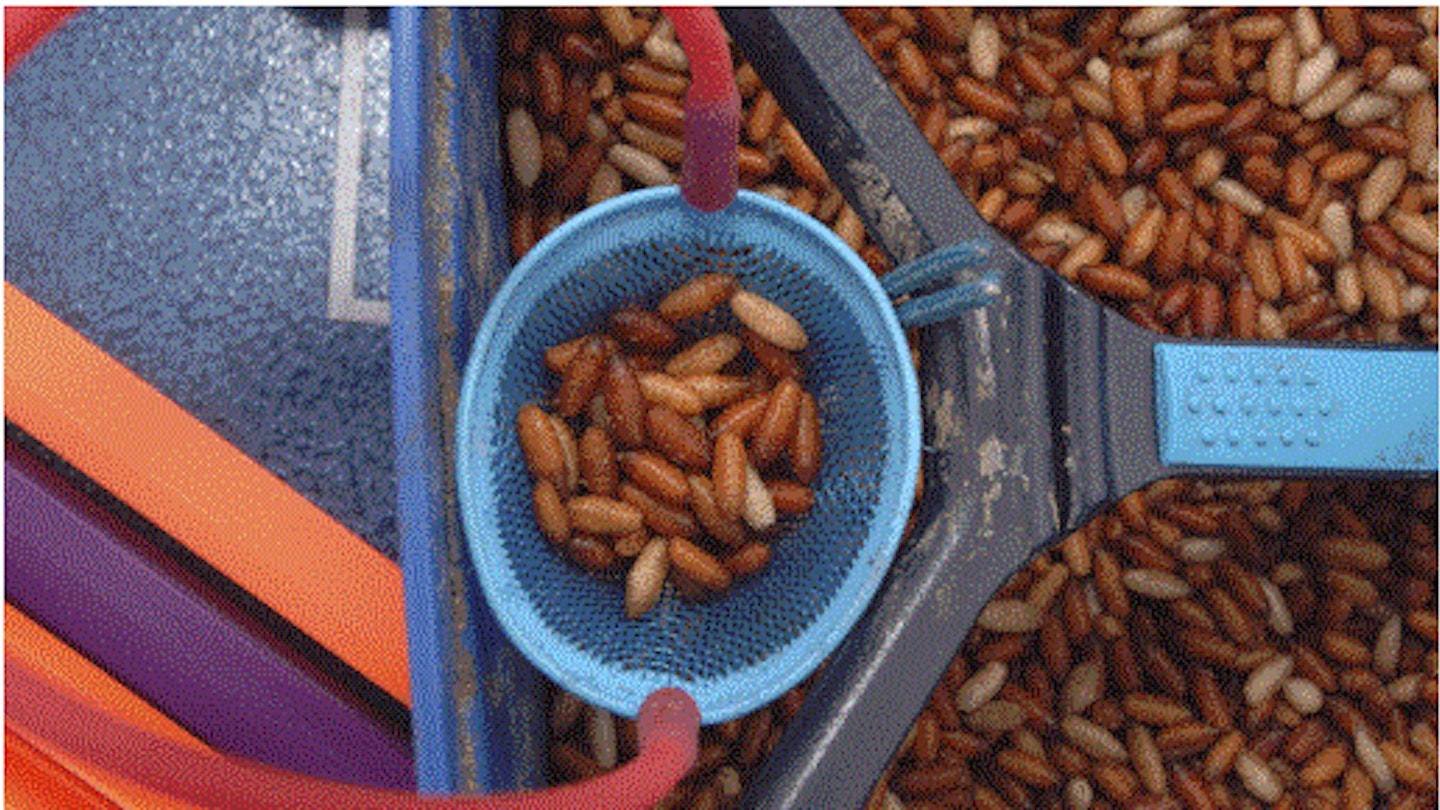Casters are the next stage in the life cycle of a maggot. They are the chrysalis of a maggot – a shell-like pupae that contains the soon-to-emerge fly.
Casters are slightly smaller than maggots and their shape is a lot more rounded. They are available at all good tackle shops and, like maggots, are sold by the pint.
Casters are a little bit more expensive than maggots due to the fact that they have taken longer to evolve than maggots, due to the fact that the maggot is stage two of the fly’s life cycle, whereby casters are stage three.
A pint of casters will cost around the £3 mark.
Casters are a superb bait that always tends to pick off the larger fish. Maybe it’s because the casters have a crunchy shell that the larger fish adore, or maybe it’s because the casters aren’t as often fished as maggots – but whatever the case, they certainly do make a great bait.
Turning your own casters
Although casters can be bought from tackle shops, there are times when they aren’t available as they have either sold out, or the bait producer hasn’t managed to run-off enough casters to go around all the shops.
To make a pint of casters you will need just over a pint of maggots – to take into account those that will die. The best maggots to use to create casters are white maggots. Coloured maggots just do not make good casters, probably due to the fact that they contain impurities, in the form of dies, that don’t help the fly’s metamorphosis.
When you get your white maggots home riddle them thoroughly and pick off any dead maggots and maggot skins by hand. You will now be left with a few maggots that have slowed their wriggling down and have started to transform into casters.
These should be tipped into a spare clean bait box and covered with folded sheets of damp newspaper, with the lid placed upon the box. Do not use dripping wet newspaper as the water may gather at the base of the bait box and suffocate some of the casters at the bottom. The best place to store these soon-to-be-casters is in a fridge.
Continue riddling your maggots twice a day, removing the casters and adding any new ones to the supply in your fridge. Within a few days you’ll have more than enough fresh casters to last a session.
Caster colouration and what it means
Buy a bag of casters and you’ll undoubtedly find casters of different shades. The freshest ones will be white or a cream colour, while the oldest will be almost black. Try to buy your casters as fresh as possible as they will not only last longer, they will give the fish a different bait to target – it’s amazing sometimes that a lighter coloured caster will bring about bites much faster than a dark one, and vice versa.
One thing to bear in mind, when you are buying or storing your casters, is the fact that the darker a caster becomes the more buoyant it will be. Light-coloured casters sink very quickly, while those much older, very darkly coloured casters will float.
Dark, floating casters can be used to great effect on occasions, particularly during the summer. Simply leave a helping of casters out in the sun (but beware of birds scoffing them all) and allow the sun to dry them out and turn the shell dark brown. A full day in the sunshine will crisp-up the shells, darken them dramatically and transform them into floaters. They can now be used on the hook to present a really slow-falling bait to catch fish on-the-drop, or they can be catapulted out as feed for surface feeding rudd or carp.
Hooking casters

hooked-caster.gif
Most baits are best used with a hook that matches the size of the bait, but casters are best used with a hook that fits inside the bait. A size 20 or 18 hook fits perfectly inside a single large caster, but that’s not to say that casters cannot be side hooked, they can.
The most important point to note when hooking casters is to do it gently and carefully because if the caster bursts it will become almost useless. And remember to use a very sharp hook!
Casters and groundbait

casters-groundbait.gif
Casters are one of the best baits to add to groundbait. Why? Because they provide a mass of protein-rich food that the fish will happily feed upon once they find the flavoured groundbait crumbs. But another great reason why casters are so good in groundbait is because they don’t wriggle, therefore they won’t break up the groundbait as it flies or when it lands on the lake or river bottom.
Caster myths
A lot of anglers think that adding crushed casters to a groundbait mix will make it a lot more appealing to fish. Although the extra scent of the crushed casters will draw in fish, crushing the casters will do more harm than good.
The shells of crushed casters float and therefore as soon as the ball of groundbait breaks down, or a fish disturbs it, the caster shells will begin to rise. This will attract the fish and they will follow the rising shells, and they will move away from your groundbait.
